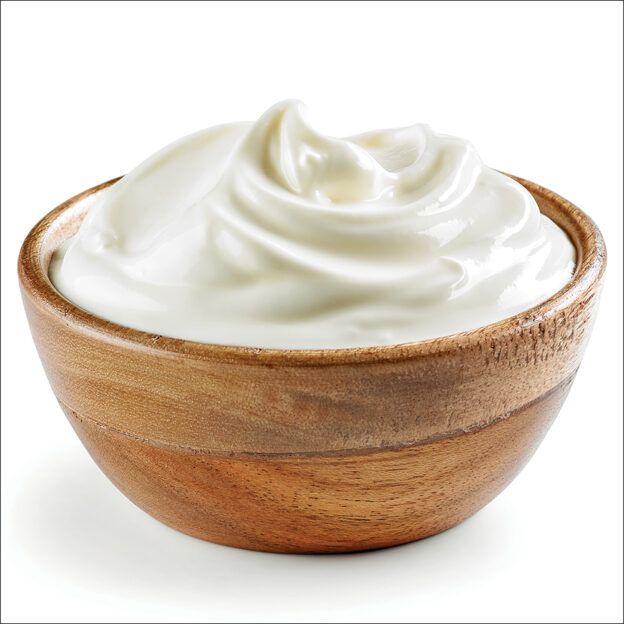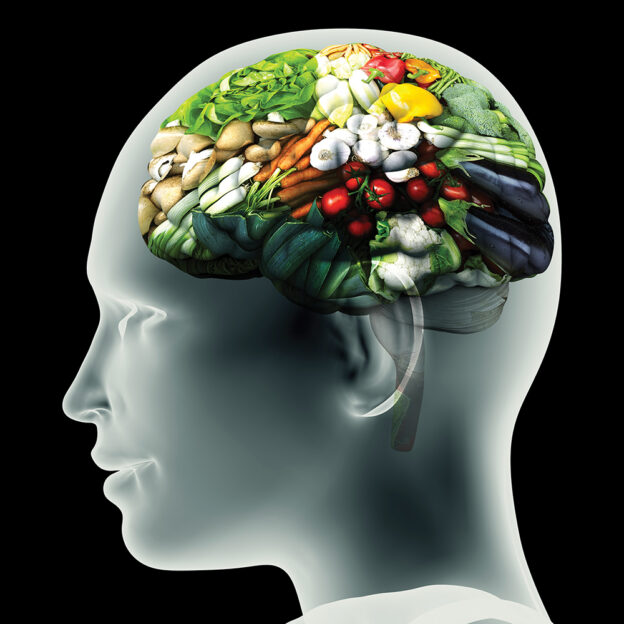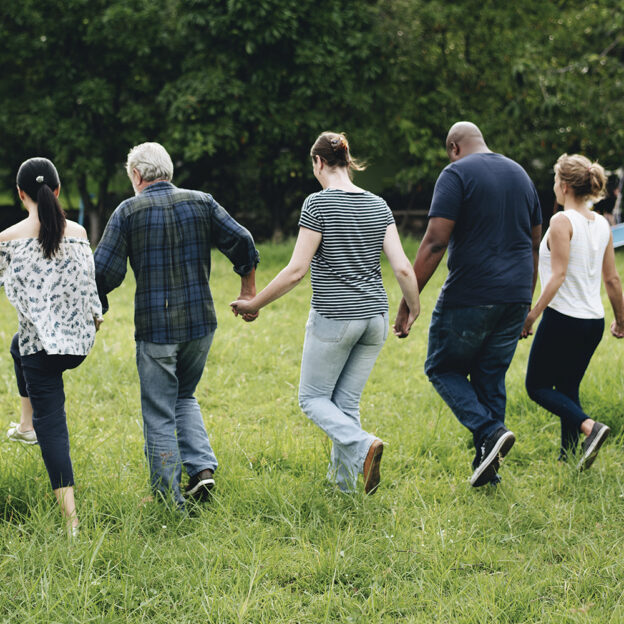By William Sears, MD, and Vincent M Fortanasce, MD

The best exercise for you is the one you will consistently do. Enjoy it! When you enjoy the exercise, you get the brain-building benefits without the brain-harming effects of stress hormones, which may increase when you are forced to do an exercise you don’t want to.
Generally, there are three types of exercises that are good for the brain. All three build smarter brains, but in different ways. Best for brain health is to do all three—strength building, aerobics, and isometrics—at least three times per week.
Strength Building Exercises
These are especially important for people over 40, for several reasons. Muscles are like brain cells—use them or lose them. Without exercise you begin losing muscle mass around age thirty. Thereafter, you tend to lose 10 percent of muscle mass every ten years after age fifty.
When you lose muscle, several negative brain effects occur. Since muscle, like the brain, is a big sugar user, when you lack muscle, you lose a sugar balance. The more muscle you have, the more likely you are to maintain insulin sensitivity—meaning that your cells use the glucose you consume more efficiently—and avoid sugar spikes.
Perhaps the biggest brain-health effect of strength training is that this type of exercise stimulates your body to make more growth hormone. When you heavily exercise a muscle to its fatigue point (“feel the burn”) you exhaust your mitochondria—those millions of tiny energy batteries within each cell.
These energy-needy mitochondria quickly send a biochemical message to the brain, telling it to make more human growth hormone, which builds more mitochondria and re-energizes the muscle. When this hormone sends a message to build more muscle, it also sends a message to produce more BGF, which builds more brain tissue.
Trees Trump Treadmills
To get the most brain-building bang for your walking buck, movement in nature is best. Why? Walking on uneven surfaces—grass, sand, twigs, and so on—requires more muscles. And, quite frankly, the brain gets bored moving on a monotonous treadmill.
Aerobics
Aerobics, or whole-body movement that gets your heart pumping (also referred to as “cardio”), includes walking, running, swimming, and dancing. Aerobics mainly benefit your brain by increasing blood flow, and increased blood flow to your brain releases brain-fertilizing and mood-mellowing hormones.
Research reveals that exercise can help aging people develop a larger brain. After six months of aerobic exercise, study participants grew larger brains, both in gray and white matter. The researchers concluded that the increase in brain volume was most likely due to an increase in BGF, an increase in small blood vessel growth, and more interconnections between brain cells.1
The study also showed the benefits of aerobic exercise for brain growth over other forms of exercise. The healthy older adults in the study were divided into two groups. One group did lots of cardiovascular exercise, also called aerobic exercise; the only change in the other group was they did non-aerobic exercise, or primarily stretching and toning exercise. After six months, follow-up MRI neuroimaging studies showed that those who participated in aerobic exercise grew larger brains both in gray and white matter, while those who only performed the stretching and toning did not.
Isometrics
Isometrics are muscle-maintaining and muscle-building—the anytime, anywhere smart exercise that anyone can do. Your bones don’t move, only your muscles flex.
In isometrics, you simply flex large muscles, like quads, biceps, glutes, and abdominal muscles (when possible, pressed against other muscles or against a table). Then you hold them for 30 to 60 seconds until you feel the burn. (Remember, when you feel the burn, so do your mitochondria.)
Isometrics are especially helpful for sitters who spend a lot of time in “boring” meetings. You can be lifting and holding your legs for a minute or two under the table, and no one will know. You can put your laptop screen in front of you while you flex your biceps and pecs. You’d be surprised at the end of an hour or two-hour meeting how your body feels like it’s had a good workout. If you’re a SOW (sedentary office worker), isometrics are especially for you.
HIIT Your Brain Health
High-intensity interval training (HIIT) is a favorite of trainers and a time-efficient way to get more bang for your exercise buck. HIIT means blending longer periods of moderate exercise with periodic spurts of more intense movements. For example, while walking, every five to ten minutes vigorously walk faster for a minute, or long enough to feel your heart beating harder and your breathing getting heavier.
Mayo Clinic researchers who studied how HIIT helps overall fitness concluded that this type of exercise triggers cellular DNA to produce more energy, mostly by making those mighty mitochondria more energy efficient.
Another HIIT highlight. Mitochondrial function tends to get weaker as we get older, yet research shows that seniors get greater mitochondria boost from HIIT than do younger exercisers.
Need a lift? Take a HIIT. To quickly lift out of a bad mood, and when depressed, performing a 30- to 60-second HIIT exercise will lift your spirits.
How to HIIT. As a general guide, begin with an easy 5:1 easy-to-hard ratio, such as five minutes of moderate walking to one minute of a really fast pace. Gradually progress to a 3:1 routine. To give your body a rest, you may wish to limit HIIT exercises to half of your weekly workout, such as twice per week.
The Smartest Exercise?
For those who like an all-in-one movement machine, an elliptical trainer is smartest because it combines cardio and resistance exercises.
Moving in Nature: Exercise Squared
Measurements of stress hormones in body fluids (saliva, urine, and blood) show that stress hormones drop when we move outside too. In a study done by the Department of Forest Medicine of Nippon Medical School in Japan, levels of adrenaline in the urine of participants who spent a day of walking in the woods decreased by nearly 30 percent. The stress hormone levels dropped even more in the women in the study than they did in the men.
Neuroscientists have also discovered that spending time moving outside increases a hormone called DHEA, which helps maintain the level of brain-growth boosters. Unfortunately, DHEA can decrease as we age—if we let it. The older we get, the higher the dose of go-outside-and-play we need.
—
William Sears, MD, is the co-founder of AskDrSears.com and the Dr Sears Wellness Institute, which has certified over 10,000 Health Coaches around the world. He has served as a voluntary professor at the University of Toronto, University of South Carolina, University of Southern California’s Keck School of Medicine, and University of California, Irvine. Together with his wife, Martha, he has written more than 45 books on parents, nutrition, and healthy aging.
Vincent M Fortanasce, MD, is a world-renowned neurologist, psychiatrist, and Alzheimer’s specialist and a clinical associate professor of neurology at University of Southern California. He has treated many high-profile individuals, such as Pope John Paul II and Baseball Hall of Famer Tommy Lasorda. He has appeared as a medical expert on 60 Minutes, Today, Dr Phil, Dateline, CNN’s Paula Zahn Now, and Hardball with Chris Matthews.
Well Being Journal adapted the excerpt from The Healthy Brain Book by William Sears, MD, and Vincent M Fortanasce, MD. Reprinted with permission of BenBella Books.
Stanley J. Colcombe, et al. “Aerobic Exercise Training Increases Brain Volume in Aging Humans,” Journal of Gerontology: Series A, Volume 61, Issue 11 (November 2006): 1166–1170





